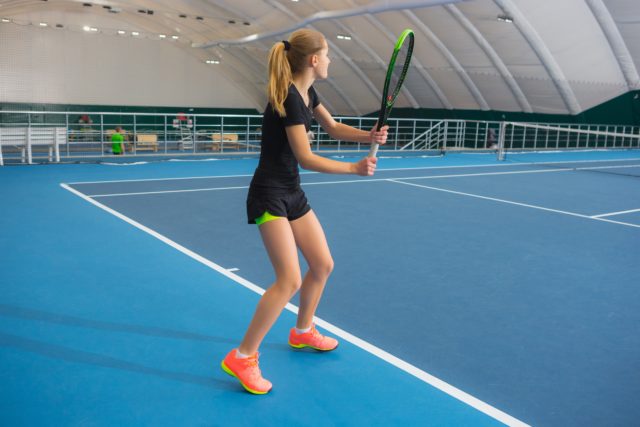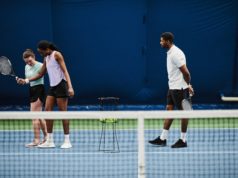By Stewart Russell, RSPA Master Professional
Tennis 101, 102, and 103
Once a range of acceptability of the parameters of the technical aspects associated with a groundstroke and/or a volley are established, and a coach feels like a proficient stroke can be maintained, PLEASE, PLEASE begin to introduce the many key variables and decision-making skills students will have to be able to perform when receiving and sending balls to and from different ANGLES.
Let’s face it folks, from the start of every tennis point the ball is being received and or sent is on some type of an angle. I feel that part of the developmental process may be stunted if students continue to be fed balls (when being instructed) in lessons and/or drills from directly in front of them for an extended period of time. I still don’t understand why a traditional doubles warmup takes place with the person in front of you down the line/straight ahead and then once play starts everything begins cross-court on an angle, but that’s a topic for discussion for another day. (Coaches discretion on when to begin incorporating, and when many of the technical aspects of a stroke have become proficient).
I believe that many of the key components of proper stroke production, like footwork needed, spacing, and assessing various speeds, shapes, spins on an attempted stroke should be more relatable to what is happening in live ball play. Each student will be different on how long it may take for this progression, but in my opinion, I am starting to sense too many coaches keeping students in what I am calling the technical stage of stroke development (Stage 1) for possibly too long.
Once students begin to understand the skills needed to send and receive balls on angles (Stage 2), then blending various shapes and spins (Stage 3) also can be implemented when feeding, instructing, and drilling.
There is a growing emphasis (at the next level) on decision-making, court awareness, ball recognition, and when and how to redirect the ball. The progression to a more advanced level and the swing principles needed to perform this skill are exacerbated when balls are received and sent from an angle.
Swing Sports Comparison on the different Angles Balls are Struck
Sports like golf (stationary object when striking) are Stage 1 sports (technical and linear); baseball with various spins, speeds, and shapes are Stage 1 and 3 sports; and tennis is a Stage 1, 2, and 3 sport. Let’s make sure our instruction/coaching reflects what is needed to compete when playing.
You might be a great hitter of the ball but be a poor player and it might directly correlate to how long you spend developing swing principles in each stage. A coach should help guide students through the progressions.




